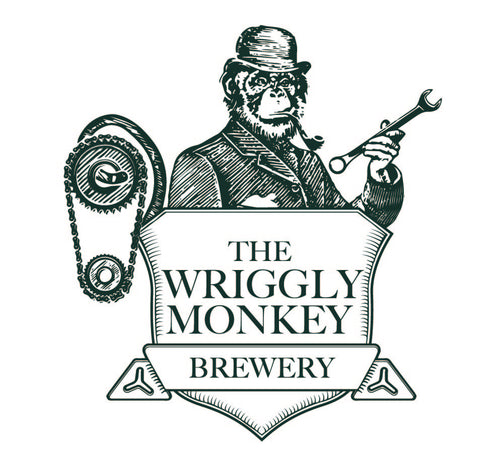The second beer of Tryanuary pays homage to this epic rally through the Alps

Many of you will be familiar with the epic Liège-Rome-Liège rally, but for those unfamiliar with this titan of events, we implore you to read on. It's such an icon that it inspired our second beer of Tryanuary - a 4.5% Saison, a style invented in Liège.
Sanction W 4.5% Saison - available January 13th and 14th only
Saison was first brewed in French-speaking Liége by farmers, who would use the barley and wheat they already grew to brew a beer for their farmhands. The story goes that the best farmhands were in demand and would choose their employer based on the quality of Saison they produced!
We're sure that our Sanction W Saison would lure the very best farmhands. Using a Belgian style yeast, this is a beer that's all about the nose, with strong aromas of pepper, banana, cloves and summer fruits.
Our Bicester Heritage neighbours, HERO-ERA, were kind enough to bring their 1954 Triumph TR3 to the brewery right as we poured the first pint of Saison. It's in the exact period spec of a Liège-Rome-Liège rally TR3, and we reflected on what an epic adventure it must have been to attempt an event like that.

And now, the Liège-Rome-Liège rally...
Back in the immediate post-war era when rallying was a true test of endurance, the Liège-Rome-Liège stood tall as the granddaddy of them all until it was eventually outlawed in 1971. Starting from Spa Francorchamps in groups of three cars at three minute intervals, the field would sprint over 3,200 miles to Rome and back in little over three days. In 1961 the event was extended to reach Sofia, Bulgaria, before looping back.
That might seem almost doable today, but in the immediate post-war era this was quite the challenge. The motorway network wasn't yet built, the Schengen zone didn't exist which meant delays for border crossings entering and exiting every country, and competitors still had to go over the top of the Alps rather than under them, usually on narrow unpaved passes. GPS didn't exist and road signs were usually nonexistent, placing extreme emphasis on navigation - that is assuming your map was accurate, which it often wasn't, and the route wasn't closed for road works or an accident, which it often was.

The event wasn't an outright sprint (...wink), instead taking the format of a regularity rally with recommended average speeds set to satisfy the authorities. Reach the checkpoints on time while incurring the fewest penalties and you win... in theory. But in reality, the checkpoints along the route were only open for limited hours and if you actually did the suggested average speeds you'd miss the checkpoints before they closed. By the late 1950s it was estimated that if you did the rally at the quoted average speed you'd arrive back in Liège a full 24 hours after the winners!
In the modern era it seems farcical that an event like this even took place, let alone on open public roads. Accidents were commonplace, the roads were so rough that broken cars were limped for thousands of miles, not to mention the obvious risks inherent with attempting to average 70mph in a 1960s car for 84 hours without sleeping...
But what an adventure!

